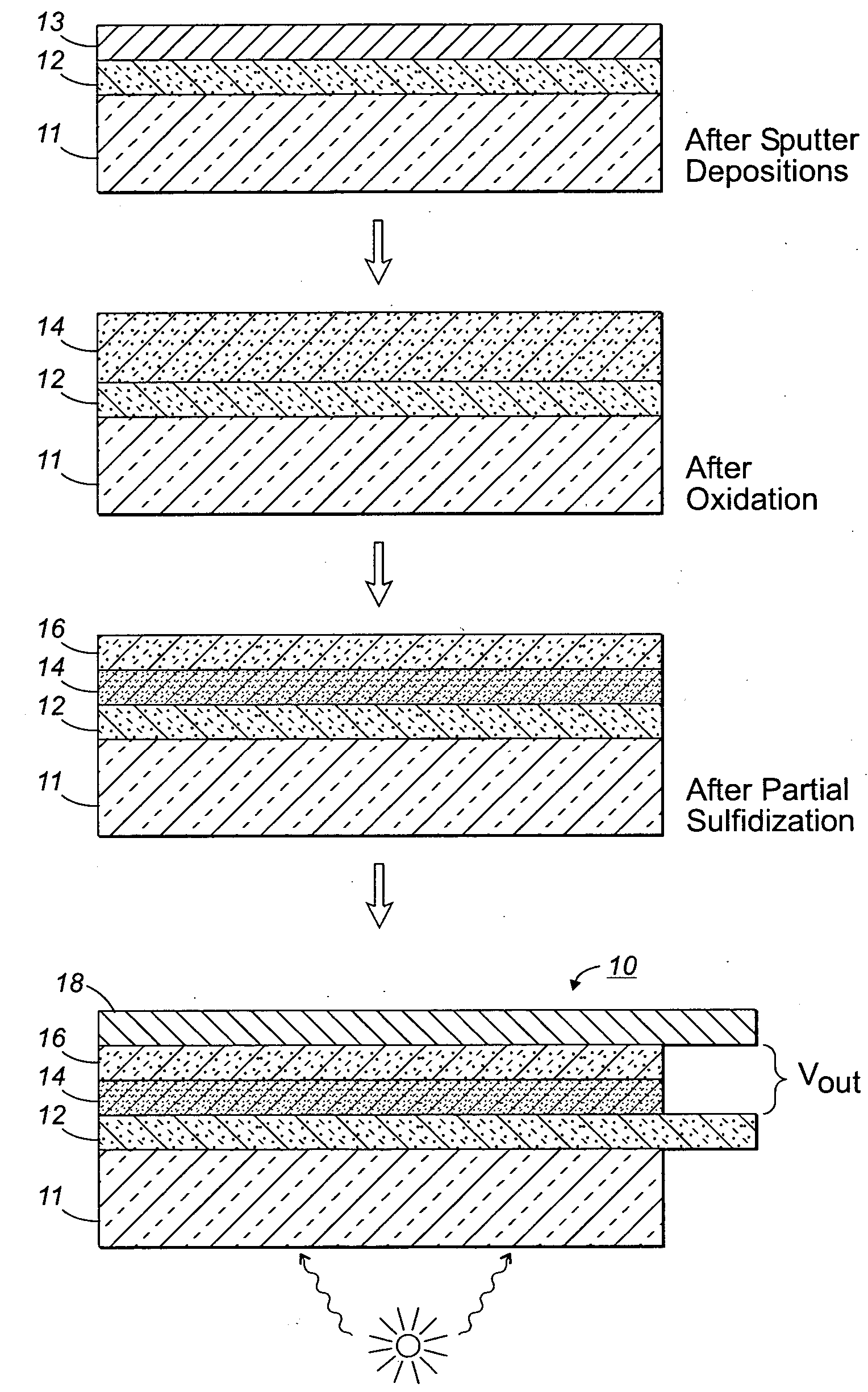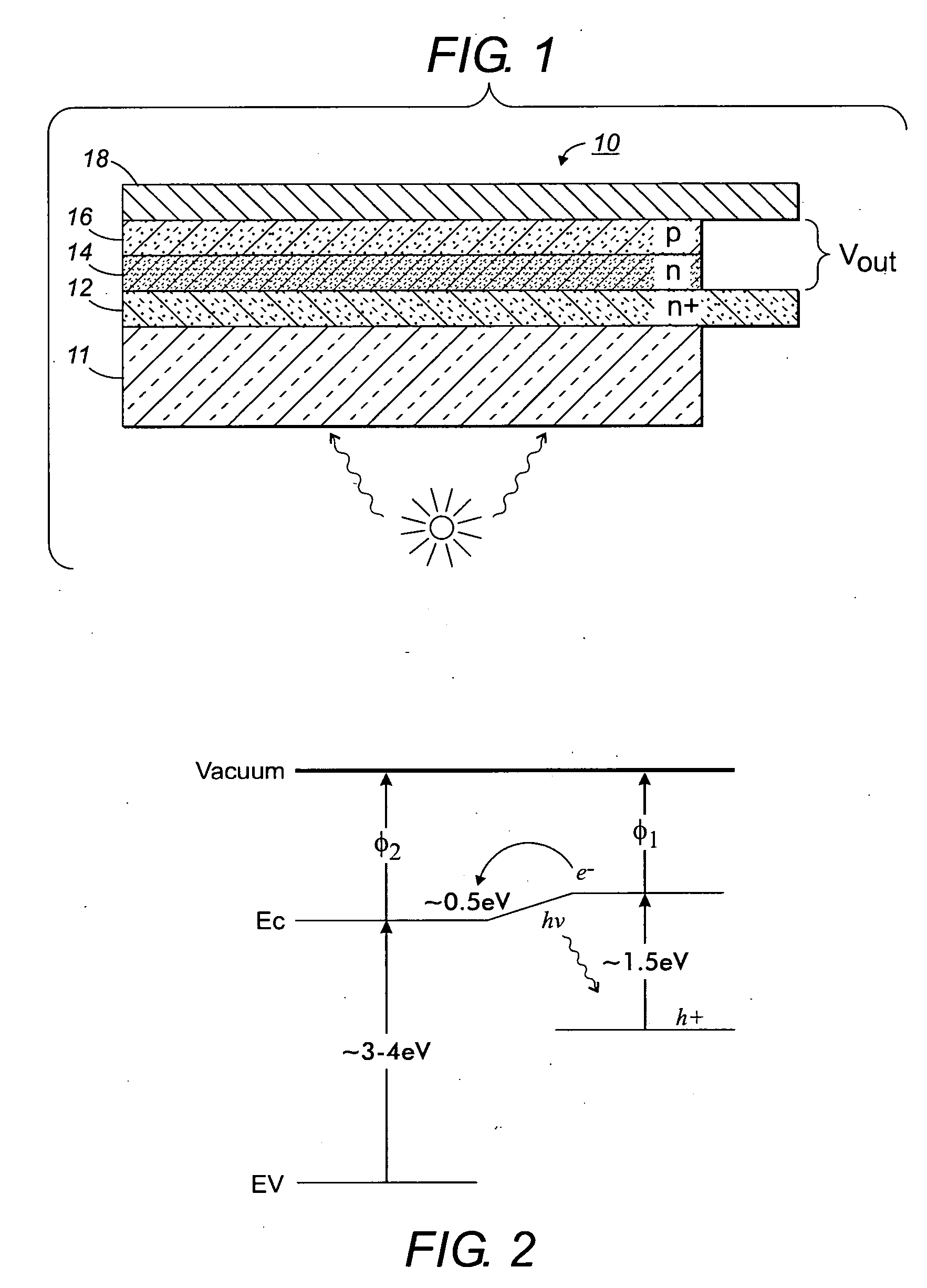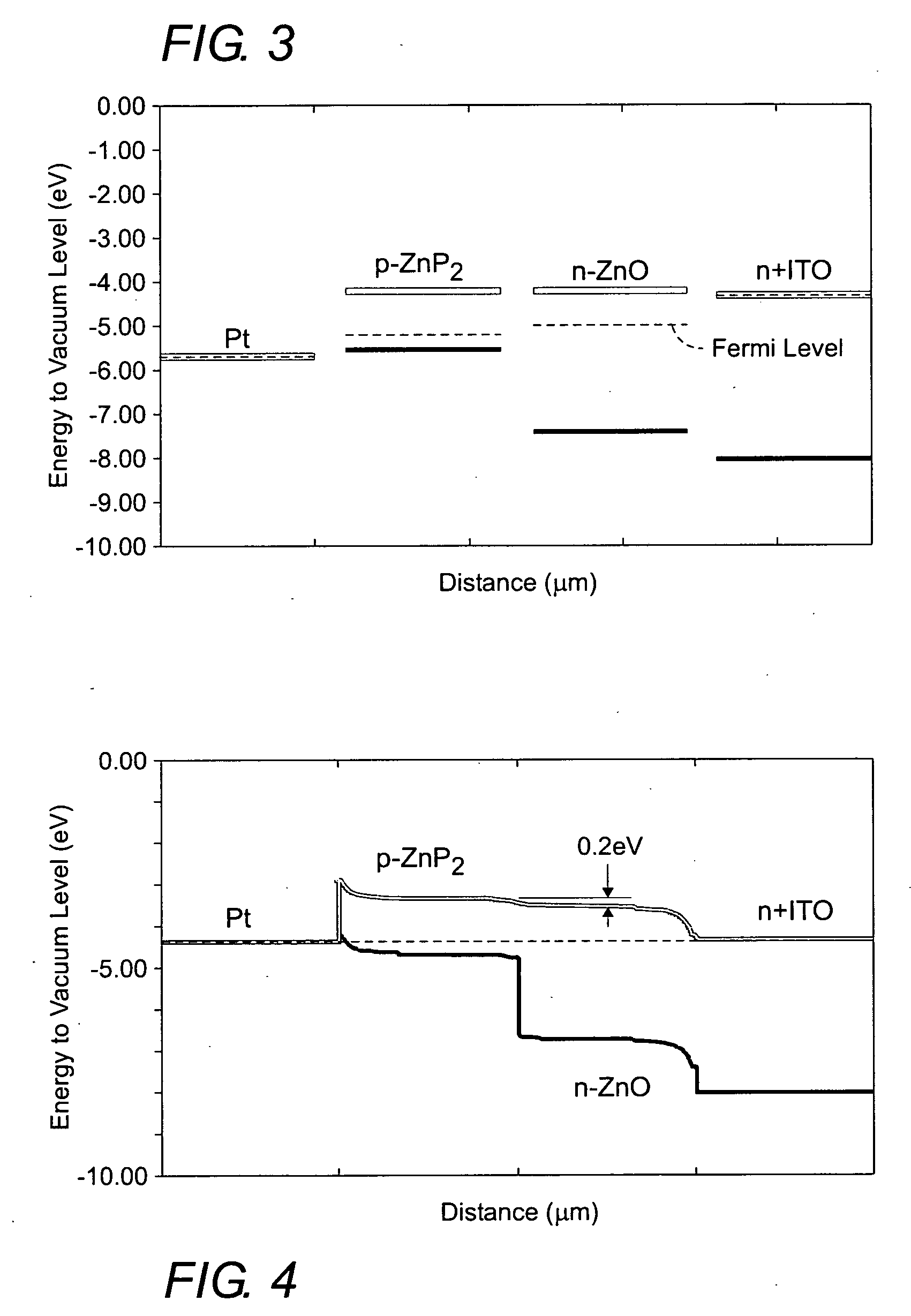Heterojunction photovoltaic cell
a photovoltaic cell and heterojunction technology, applied in the field of solar photovoltaic cells, can solve the problems of high manufacturing cost, complex fabrication process of dissimilar materials, poor mobility of such materials,
- Summary
- Abstract
- Description
- Claims
- Application Information
AI Technical Summary
Benefits of technology
Problems solved by technology
Method used
Image
Examples
Embodiment Construction
[0023] Referring now to FIG. 1, a photovoltaic cell 10 is illustrated. The photovoltaic cell 10 is a planar device and includes an electrically conductive support formed of an optically transparent substrate 11 and a transparent electrically conductive film 12.
[0024] The material used in the substrate 11 is not particularly limited and can be various kinds of transparent materials, and glass is preferably used.
[0025] The material used in the transparent electrically conductive film 12 is also not particularly limited, and it is preferred to use a transparent electrically conductive metallic oxide such as fluorinated tin oxide (SnO2:F), antimony-doped tin oxide (SnO2:Sb), indium tin oxide (ITO), aluminum-doped zinc oxide (AnO:Al) and gallium-doped zinc oxide (ZnO:Ga). The preferred materials for the transparent electroconductive film 12 are ITO or fluorinated tin oxide.
[0026] Examples of the method for forming the transparent electrically conductive film 12 on the substrate 11 inc...
PUM
 Login to View More
Login to View More Abstract
Description
Claims
Application Information
 Login to View More
Login to View More - R&D
- Intellectual Property
- Life Sciences
- Materials
- Tech Scout
- Unparalleled Data Quality
- Higher Quality Content
- 60% Fewer Hallucinations
Browse by: Latest US Patents, China's latest patents, Technical Efficacy Thesaurus, Application Domain, Technology Topic, Popular Technical Reports.
© 2025 PatSnap. All rights reserved.Legal|Privacy policy|Modern Slavery Act Transparency Statement|Sitemap|About US| Contact US: help@patsnap.com



